Avocado
One of the easiest and most reliable sources of a good pink (in my opinion) is the avocado - fibre does not need to be mordanted and you get good bang for your buck! In this particular case I extracted dye from 6 avocados (skins and stones) I had in the freezer and dyed about 150g yarn. Both of the photos below show the same dyed wool gauze sample for colour comparison. The alum adds a more salmon tinge to the oink.
Rosemary
Having read many instances of dyeing with rosemary and achieving shades of yellow, brown, grey, and even purple? I decided to try this for myself. We have only a couple of small rosemary bushes in our veg trug so I snipped about 20g of rosemary sprigs, stripping off the rosemary from their stalks into a metal bowl. I covered them with recently boiled water, added 3 small skeins of yarn (alum mordanted) and wool gauze sample, and left alone overnight. (Strength would be 200%wof)
The yarn had turned a pale but bright yellow. I began to heat the bowl gently over a pot of water and within 5 mins of simmering, the yarn had begun to turn green which increased in intensity after 30 mins simmering then leaving to cool down overnight. An amazing amount of dye seemed come from so little rosemary.
I was particularly excited by the green yarn after 30 mins simmering - not many plants seem to give this colour without further modification. Of course I'm not sure how light fast this will prove, but certainly with repeating, only next time I would put the rosemary in a net bag - the time I spent unpicking them from the yarn......
From top to bottom the yarns are - rosemary at room temperature, 5mins simmering, 30 mins simmering, and 30mins simmering iron water modified. The wool gauze was not mordanted and was taken out after 30 mins simmering.
Sage
After the success of dyeing with rosemary I moved on to sage and used the same method as above using also about 200% wof chopped sage leaves.
Marjoram
Next came marjoram or oregano, also around 200% wof of stripped leaves used and treated in the same way as above.
The photo below shows the alum mordanted yarns dyed with sage and marjoram. both gave a pale yellow (top skein of each pair) when left overnight at room temperature, that progressed to a lime green (bottom skein of each pair) when the pot was simmered for 30 - 45mins and then cooled down overnight. both produced a lovely green but more slowly for marjoram, and with a much more yellow tinge than rosemary green.
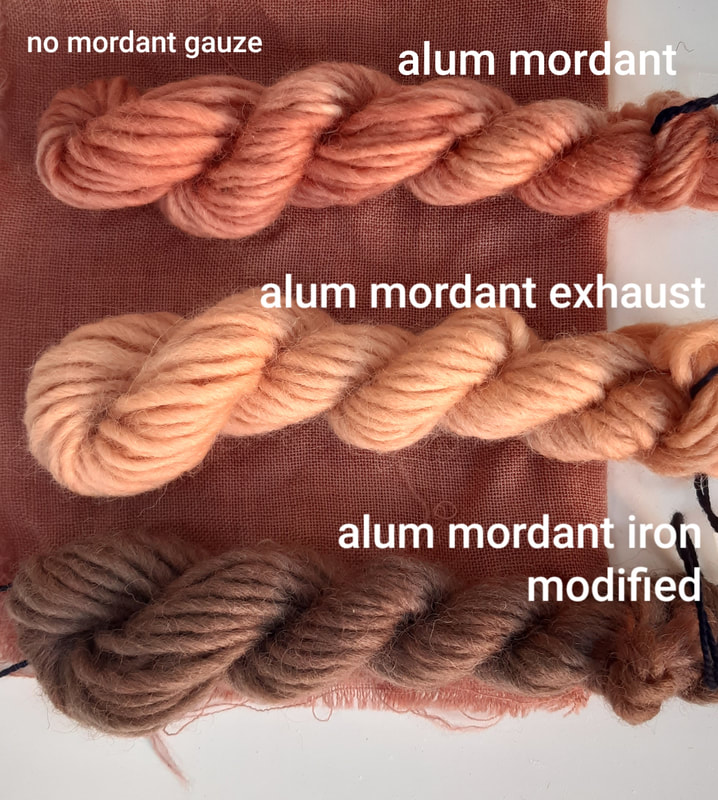
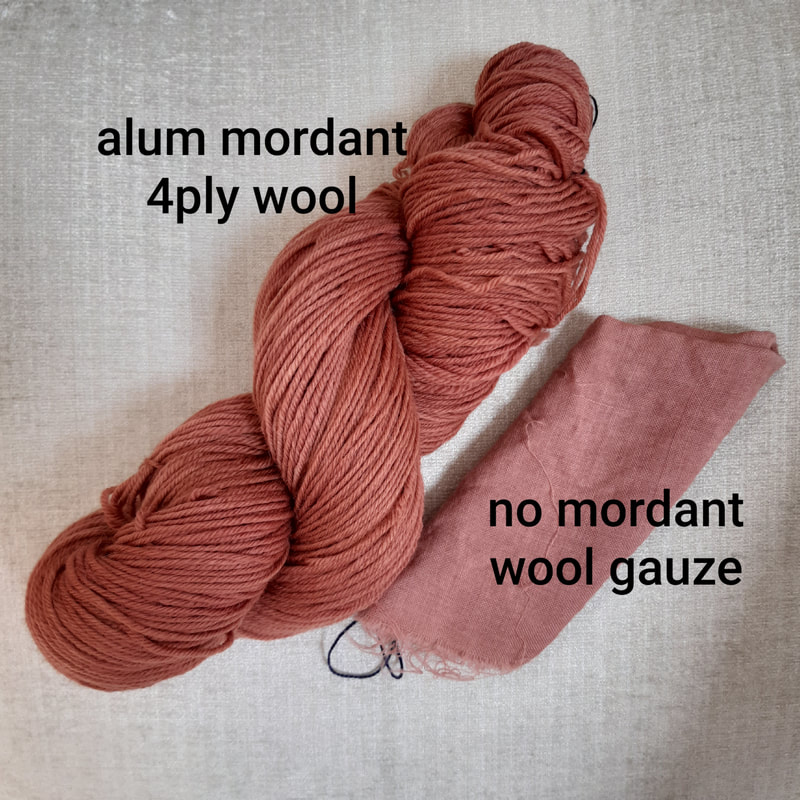
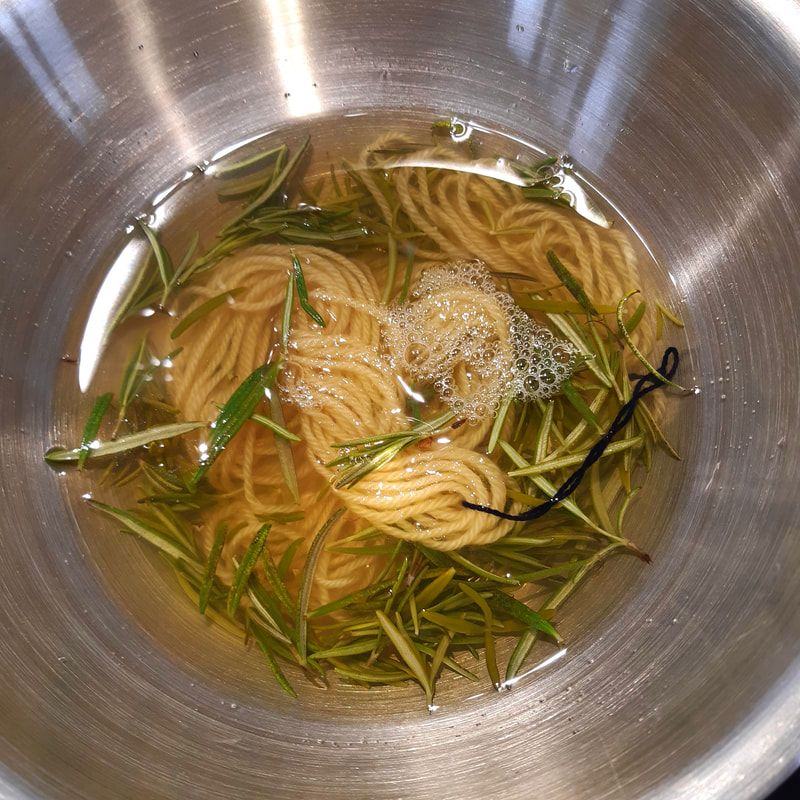
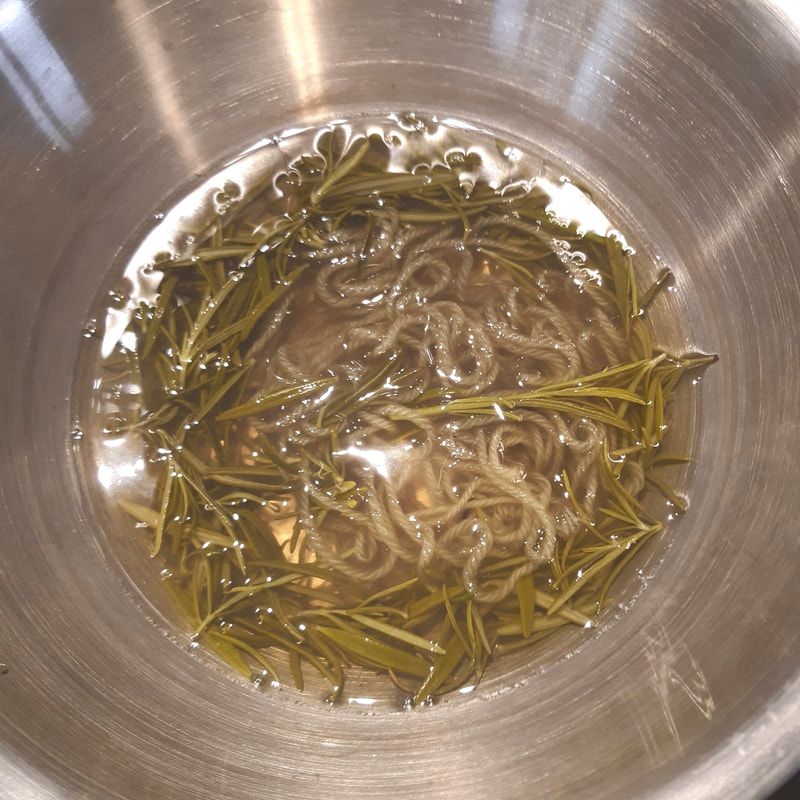
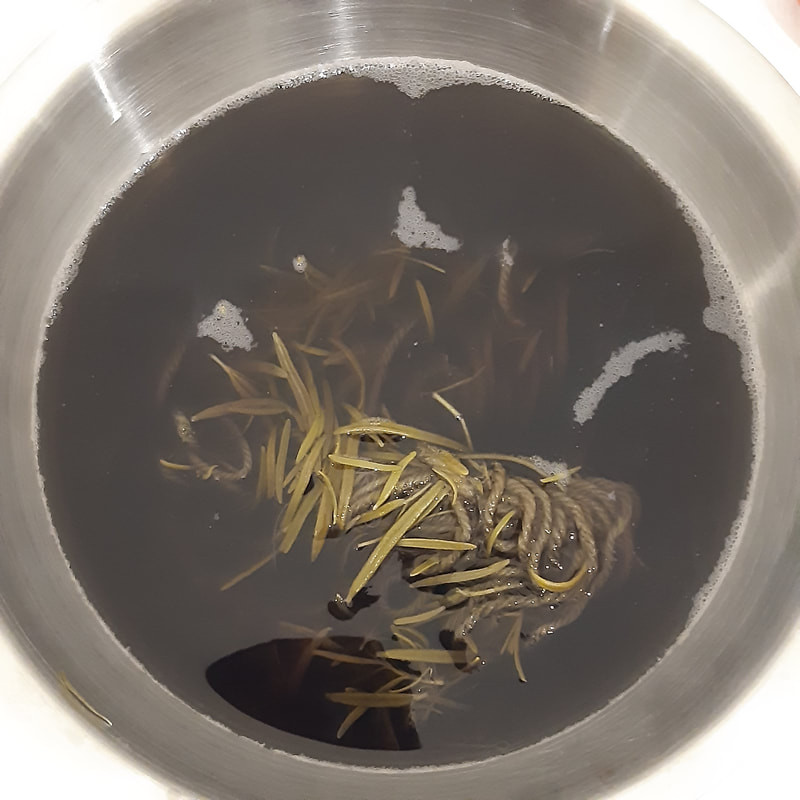
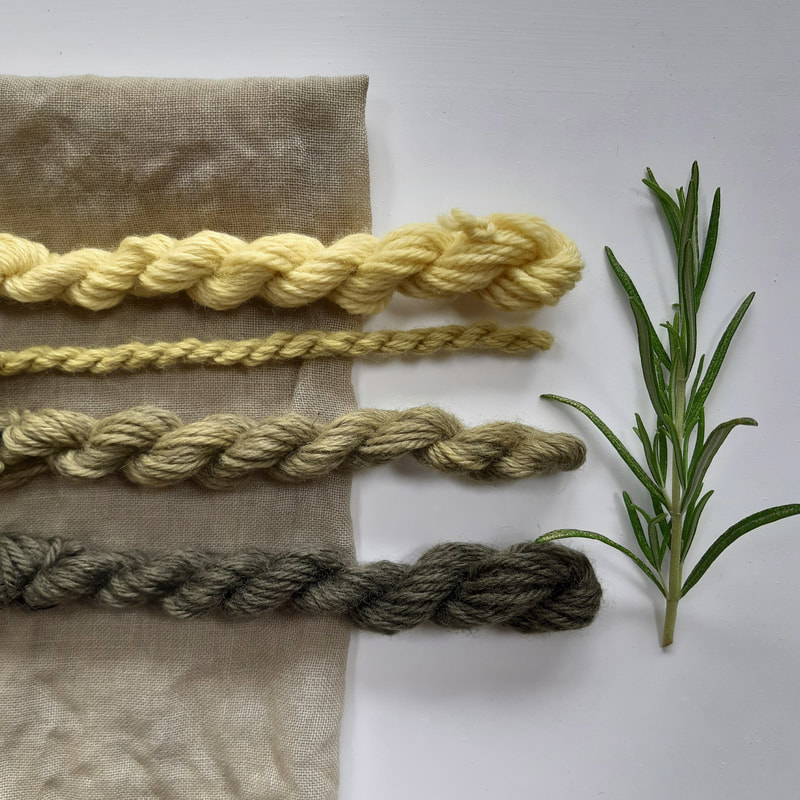
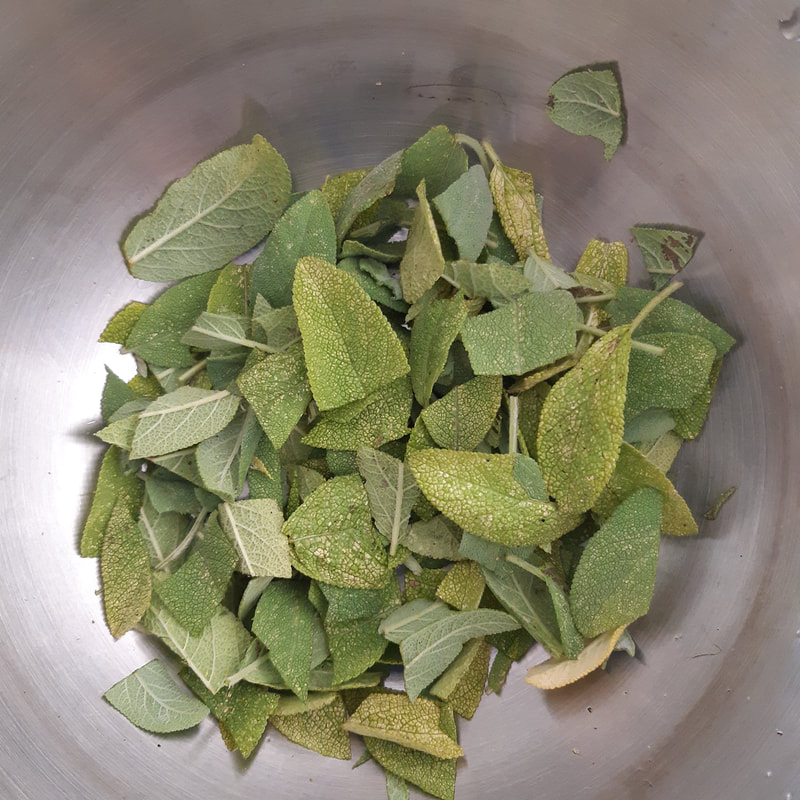
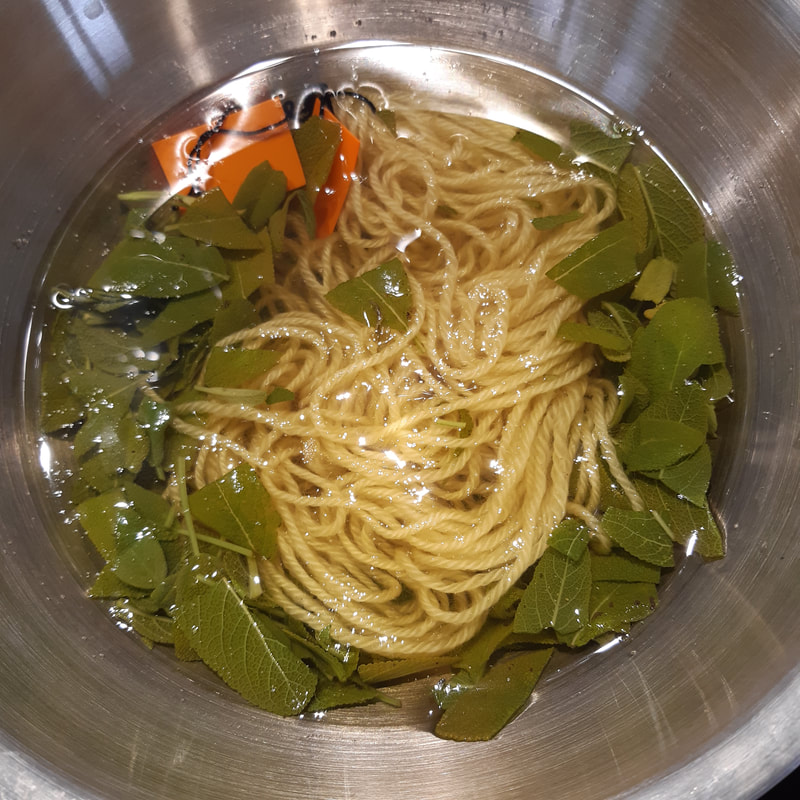
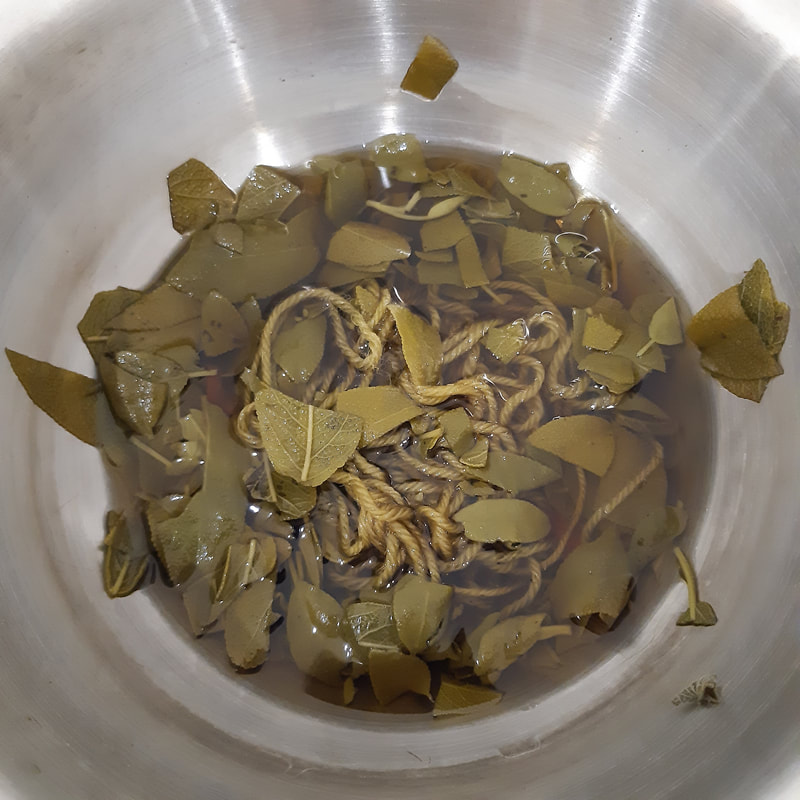
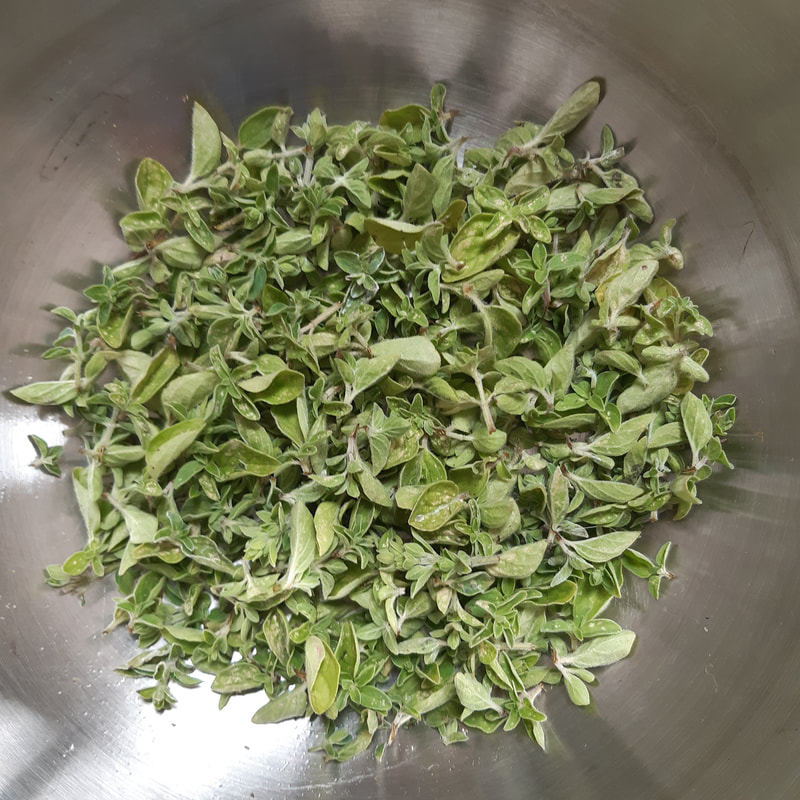
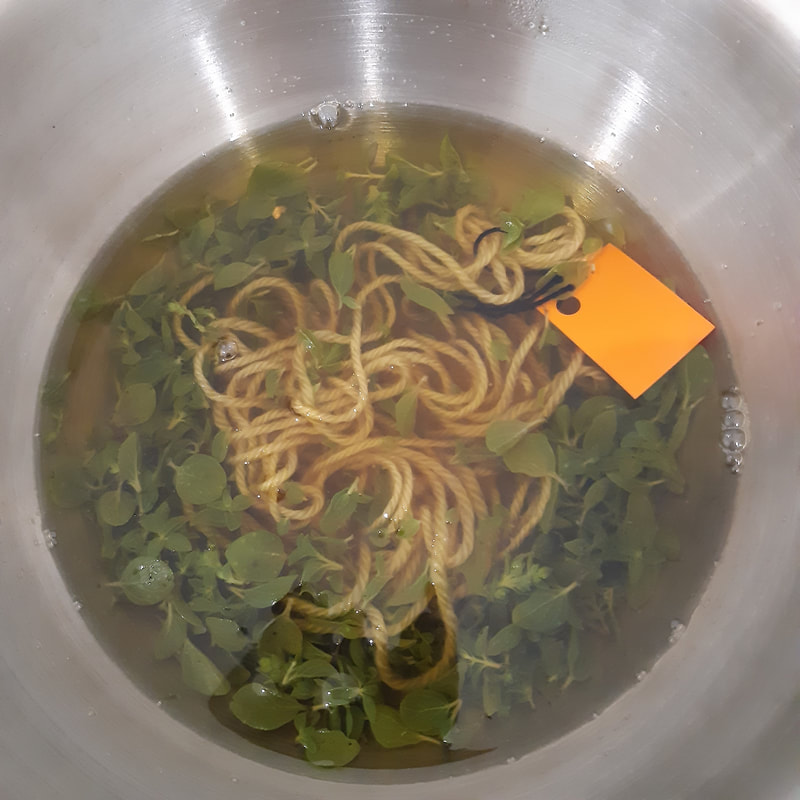
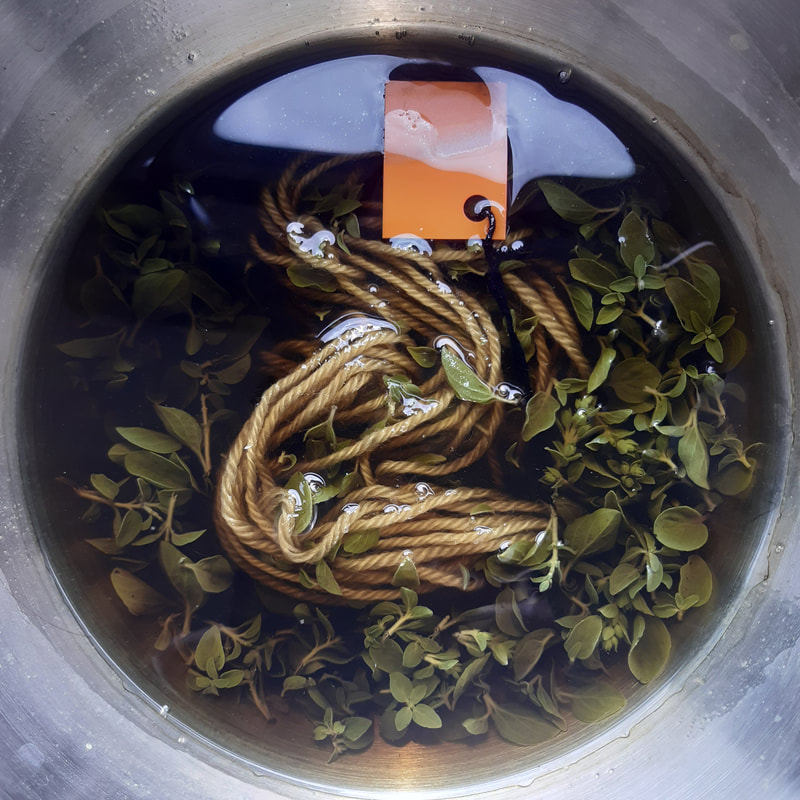
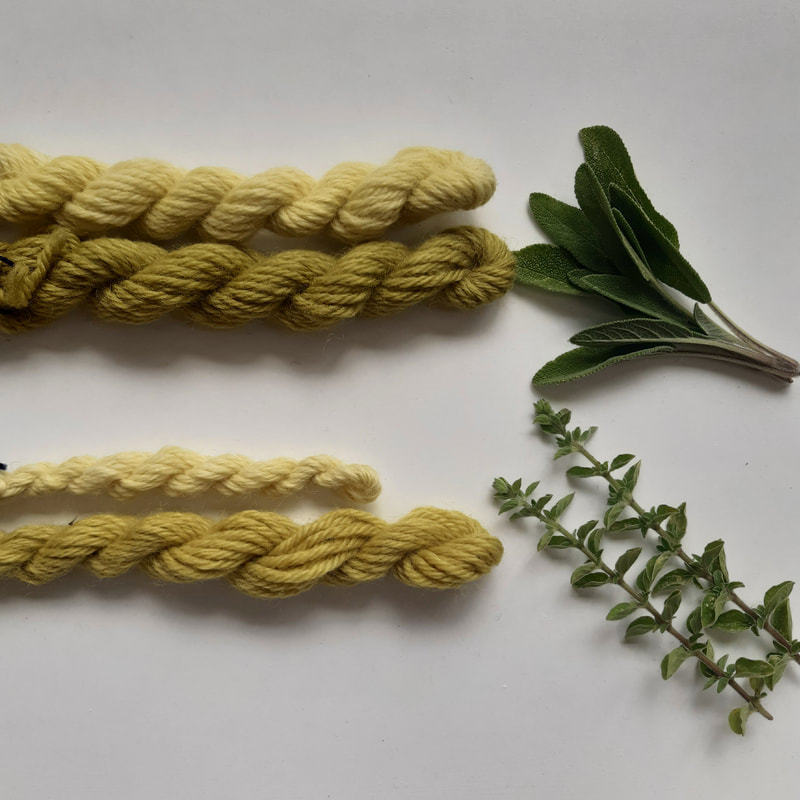
 RSS Feed
RSS Feed
